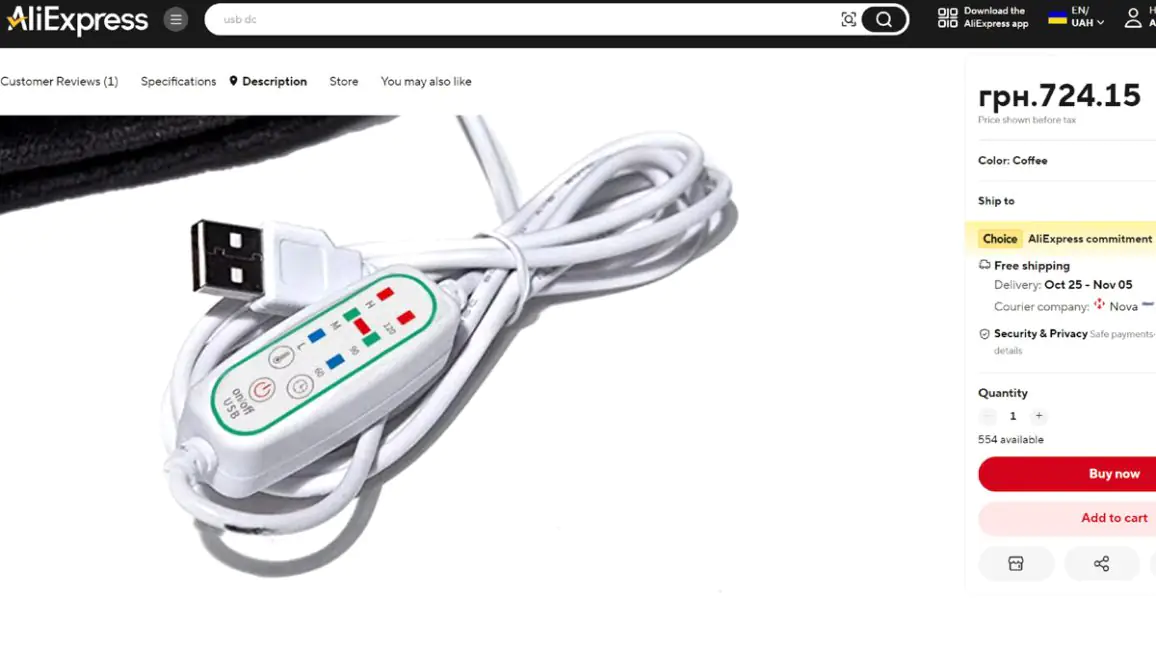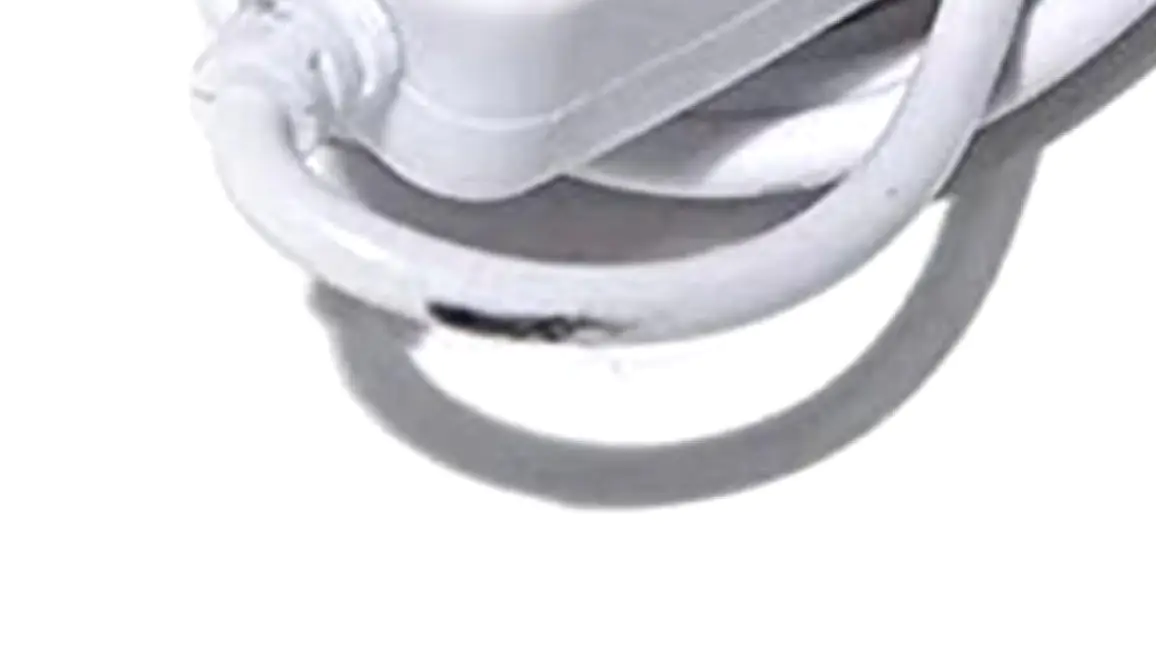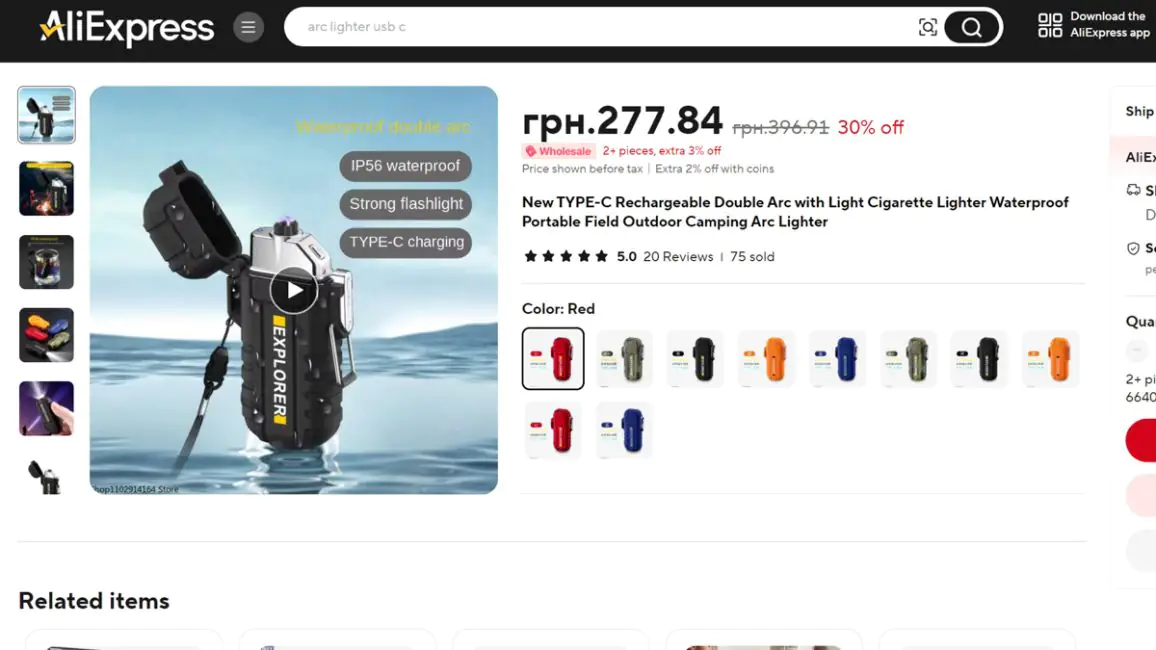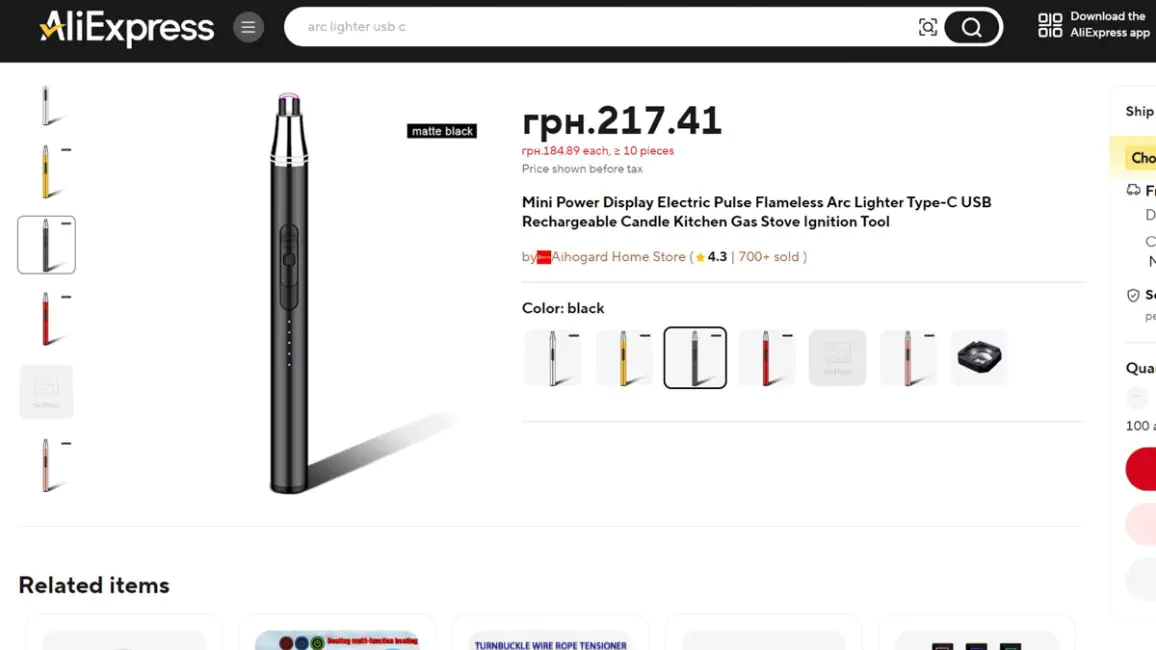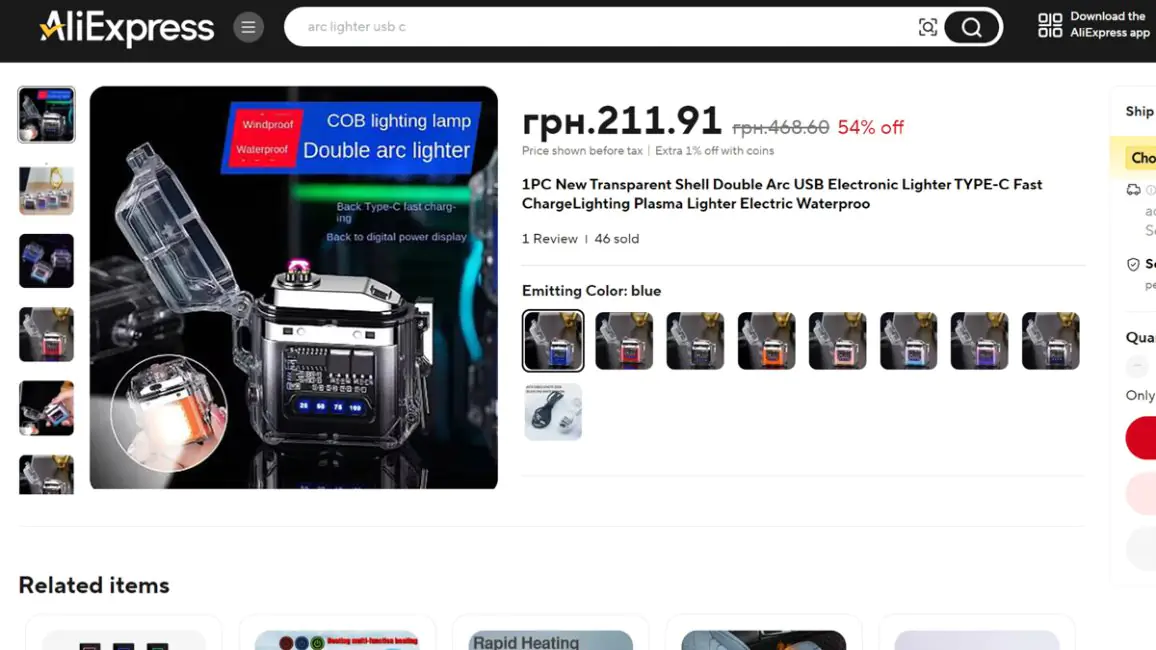© ROOT-NATION.com - Use of content is permitted with a backlink.
The key takeaway from creating this material is straightforward: the higher the power of a heating element, the faster and more effectively it warms up. However, this poses a challenge, as the primary rule here is to avoid any heaters that operate on a 220V power supply. Even if you own a charging station like the EcoFlow River 2, during cold weather and blackouts, you’ll end up wasting valuable energy just converting 12V to 220V, which is not only inefficient but also noisy.
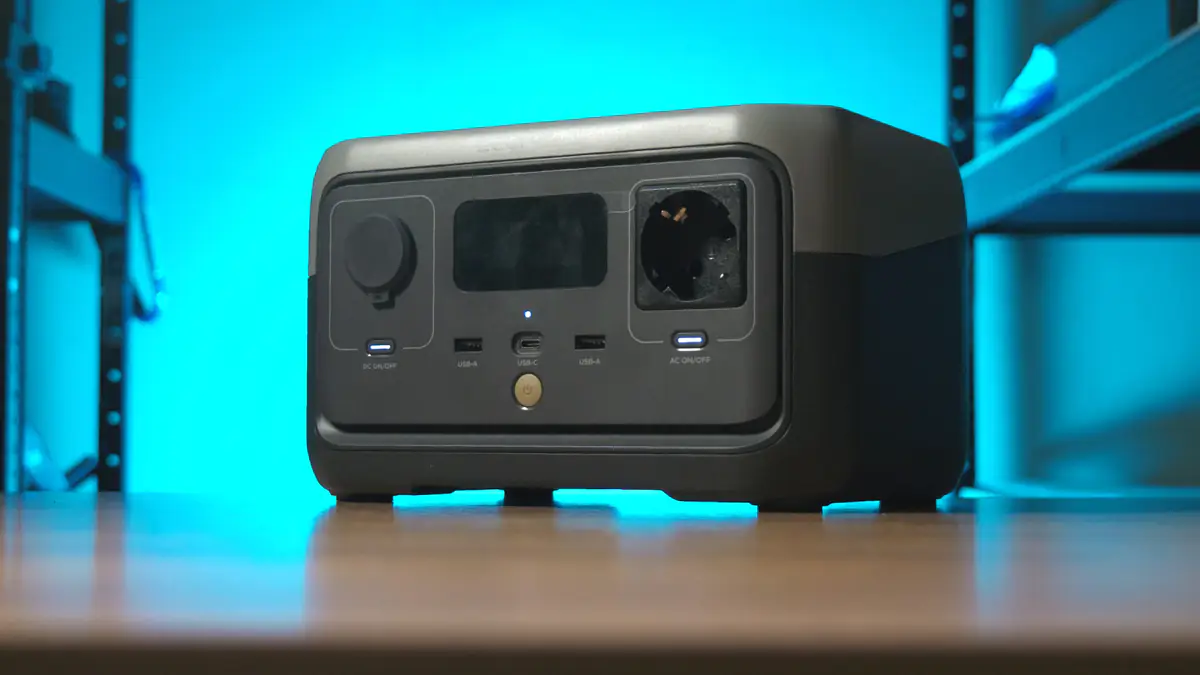
Main danger
If your power supply is as unstable as ours, there’s an additional risk—an electric blanket, for instance, could catch fire during a particularly severe power surge. And it’s better if that happens during the day rather than at night. Smart sockets, like those from Ajax, can help mitigate this risk, but they come with a price tag. If your budget is tight, you’ll face a choice: either prioritize heating or ensure safety.
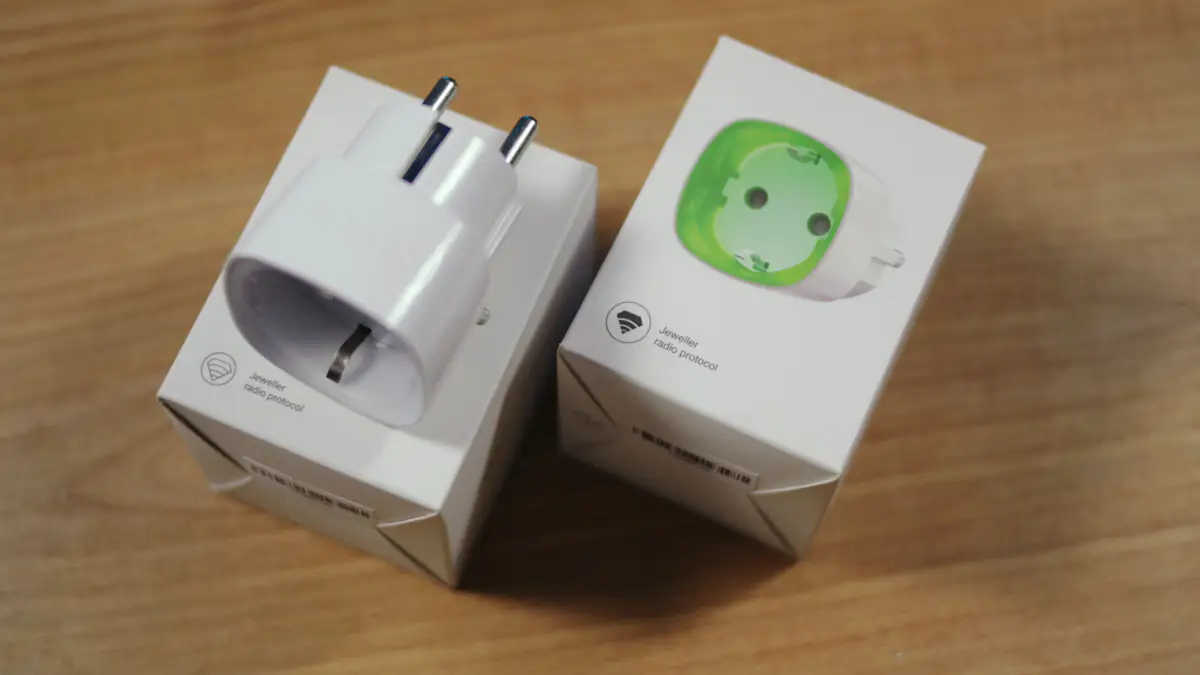
Video about heating with EcoFlow River 2 and RivaCase VA2571

Ways to avoid
So, what are the alternatives? There are two: personal heating devices and environmental heating devices. All the options in this guide are powered exclusively via USB or DC 12V using an adapter. Anything that requires a standard power outlet is immediately ruled out.
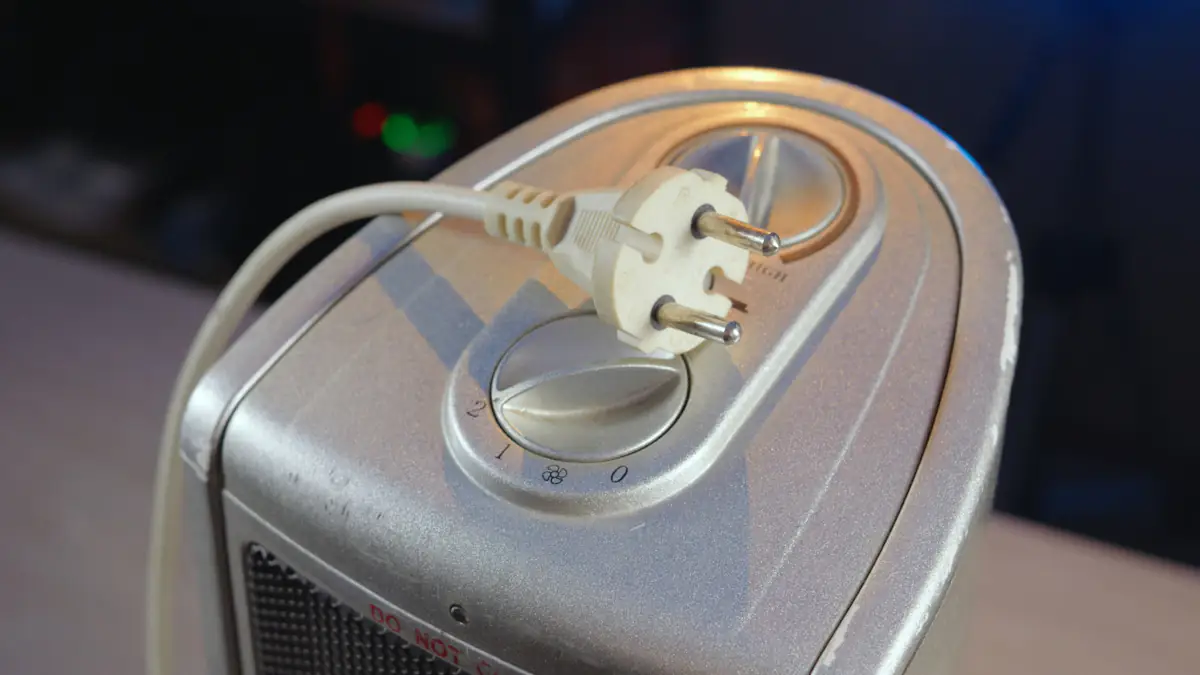
I really appreciate when devices are powered via Type-C, as it almost always means a modular cable rather than a short Type-A one that could loosen or break over time. However, you understand—right now, the choices are limited.
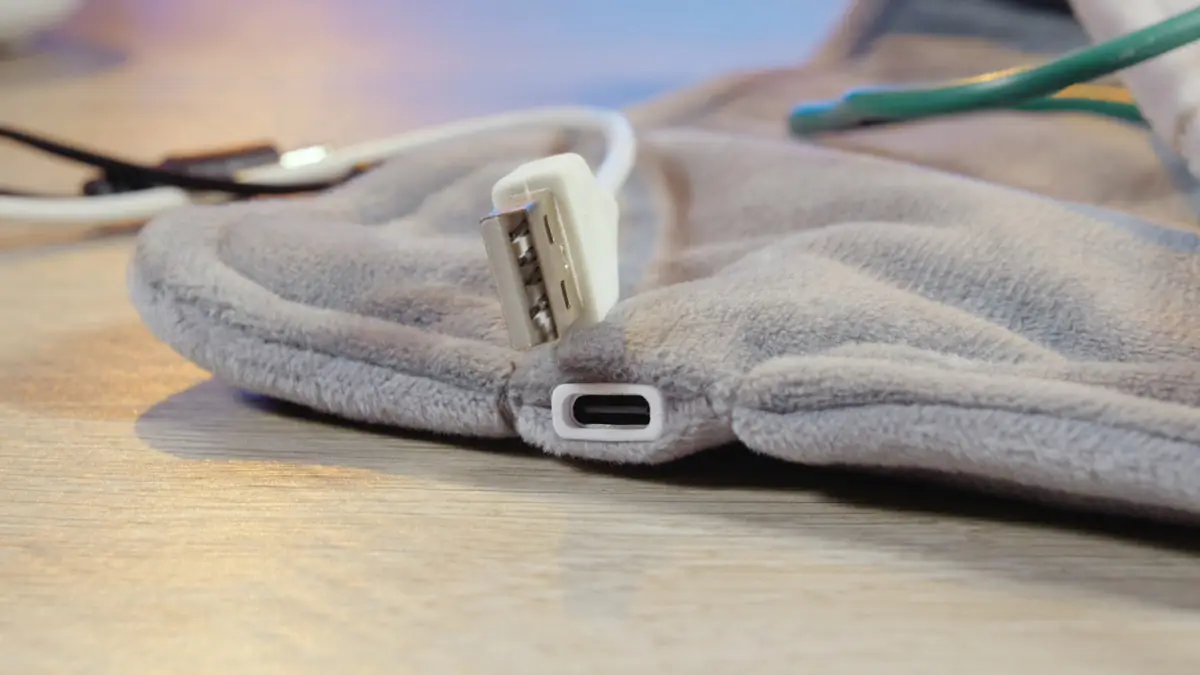
Let me explain right away why it’s worth using either power banks like the RivaCase VA2571 or charging stations like the EcoFlow River 2, with a particular emphasis on the latter. The reason lies in its 350W charging capacity, compared to a cheap power bank, which often caps at just 18W.
In situations where you only get electricity at night or for an hour or so, the River 2 will fully recharge, while a power bank might only manage half its capacity. And when it comes to capacity in watt-hours, there’s quite a noticeable difference between the two.
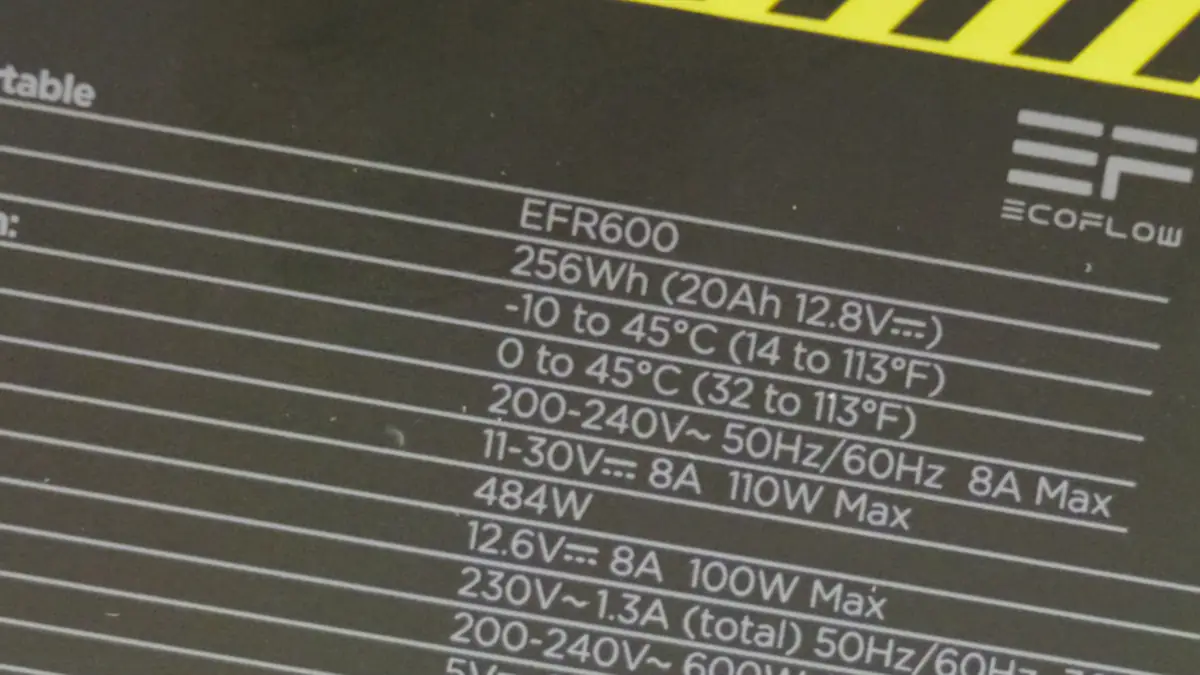
Blankets
First and foremost are heated blankets and fabrics. By “fabrics,” I’m referring to small, stitched heating pads designed for specific areas like your feet or head, rather than full-body coverage. However, they effectively provide warmth to a targeted spot.
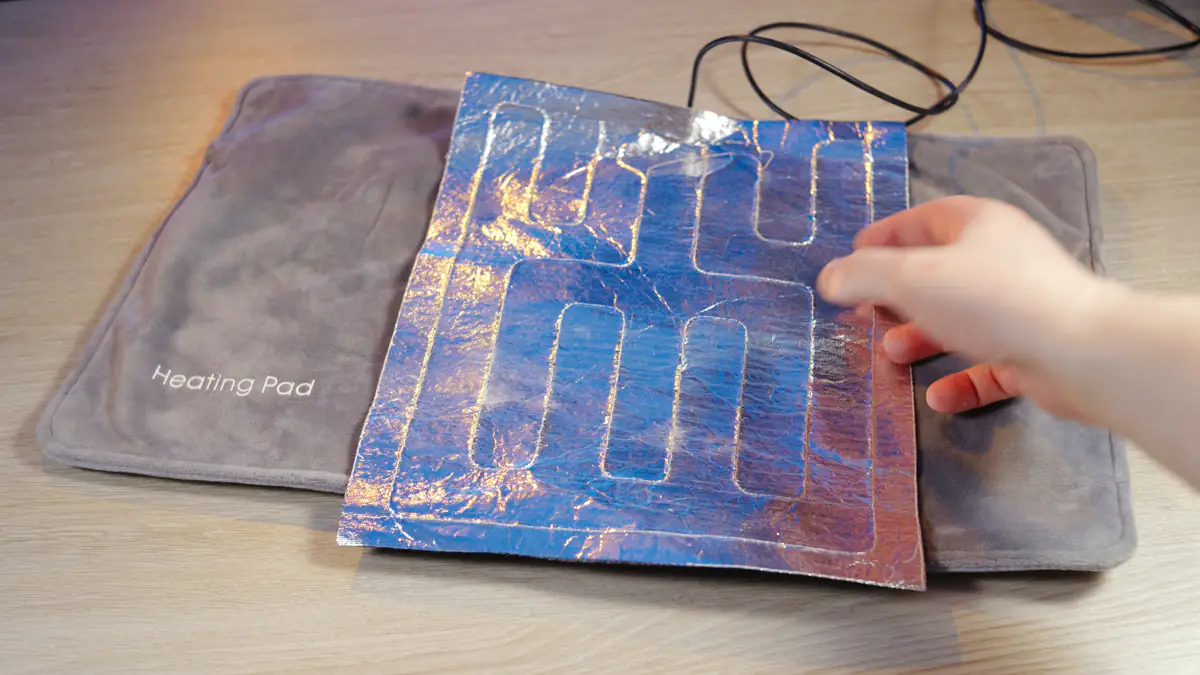
This can be particularly useful if your feet tend to get cold under a blanket, if you’re dealing with back discomfort, or even if you find yourself sitting for long periods with cold surfaces. For example, I managed to ease severe back pain within two days using a targeted heating pad—going from “I can’t stand up due to the pain” to “the pain is minimal, and I can function normally.”
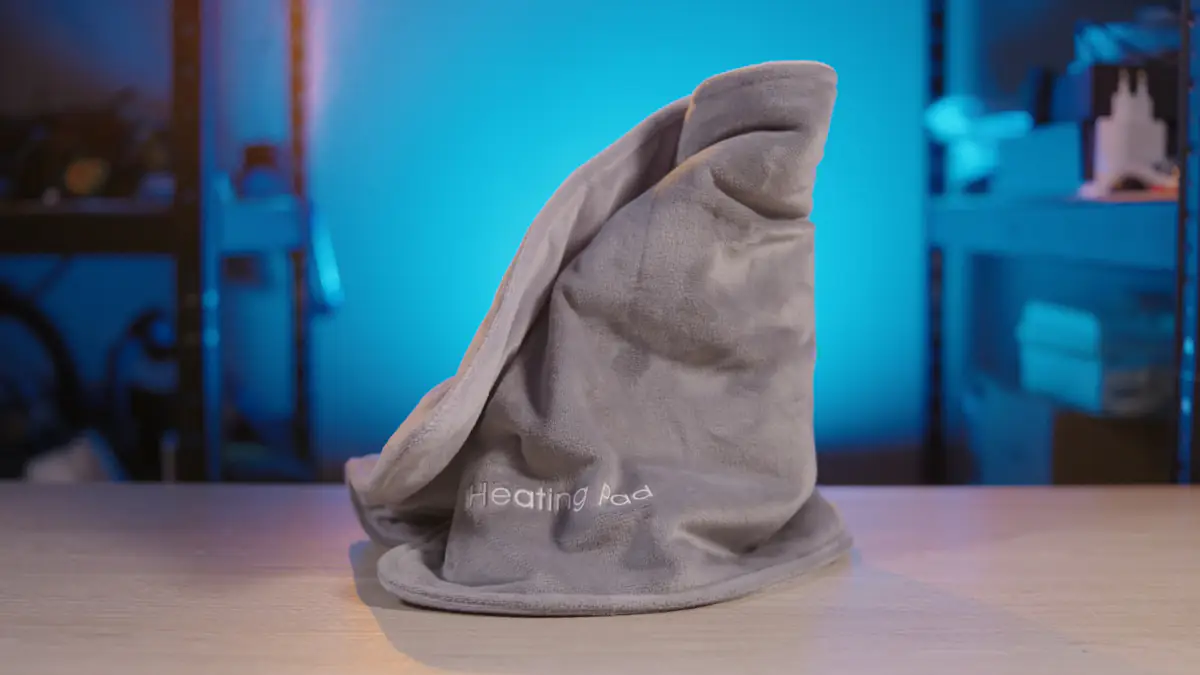
These small heating pads are quite affordable, typically priced under $10. Options range from pre-integrated fabric pads to standalone wire-based heating elements (suitable for home textiles) or even those designed for manual sewing into clothing. On the other hand, even the smallest heated blankets tend to be at least twice as expensive, and they often lack Type-C compatibility, relying solely on Type-A connections.
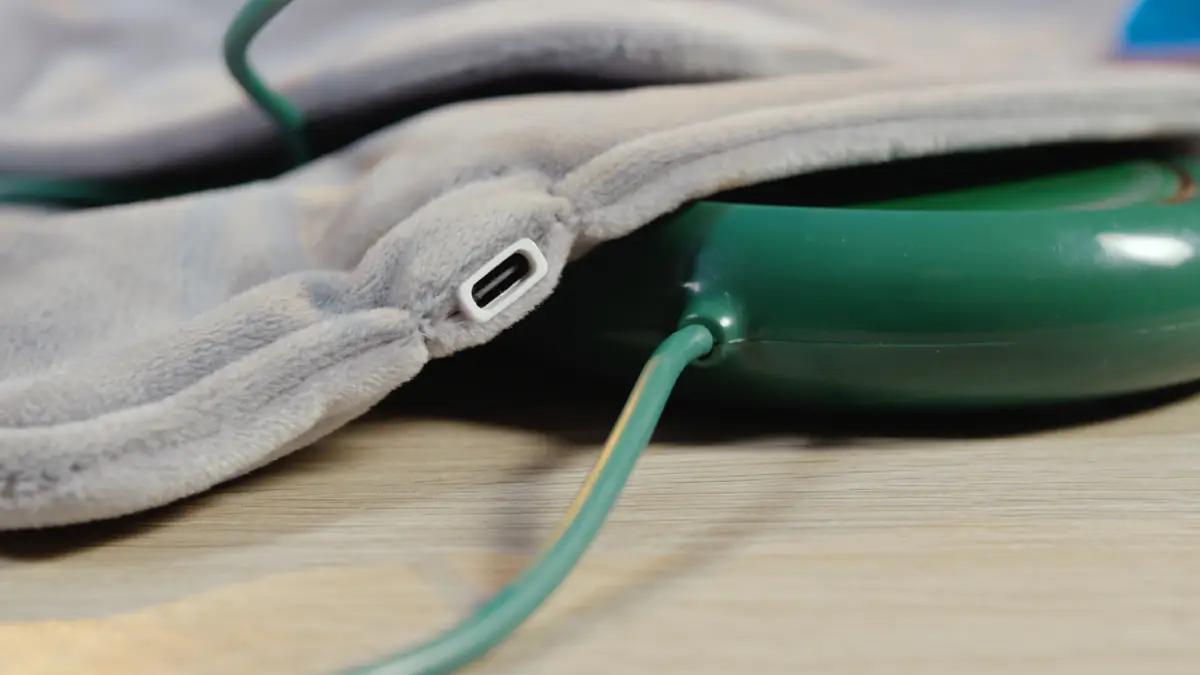
However, these heating pads start from sizes around 45×80 cm, meaning they essentially cover just part of your body. There are also specific shapes designed for areas like the neck, which can be useful if you’re sitting in a draft for extended periods. These, however, tend to be the lower-quality models. For instance, in one of the promotional photos, you can clearly see that the cable near the control unit is damaged.
However, these pads are powered via USB and consume up to 5W. This means that even if there’s a short circuit, it’s unlikely to cause a serious issue. The cheapest full-sized blankets consume around 10W and are priced between $28 and $47 for sizes of 160×80 cm and 160×160 cm, respectively. These also come with a Type-C connection.
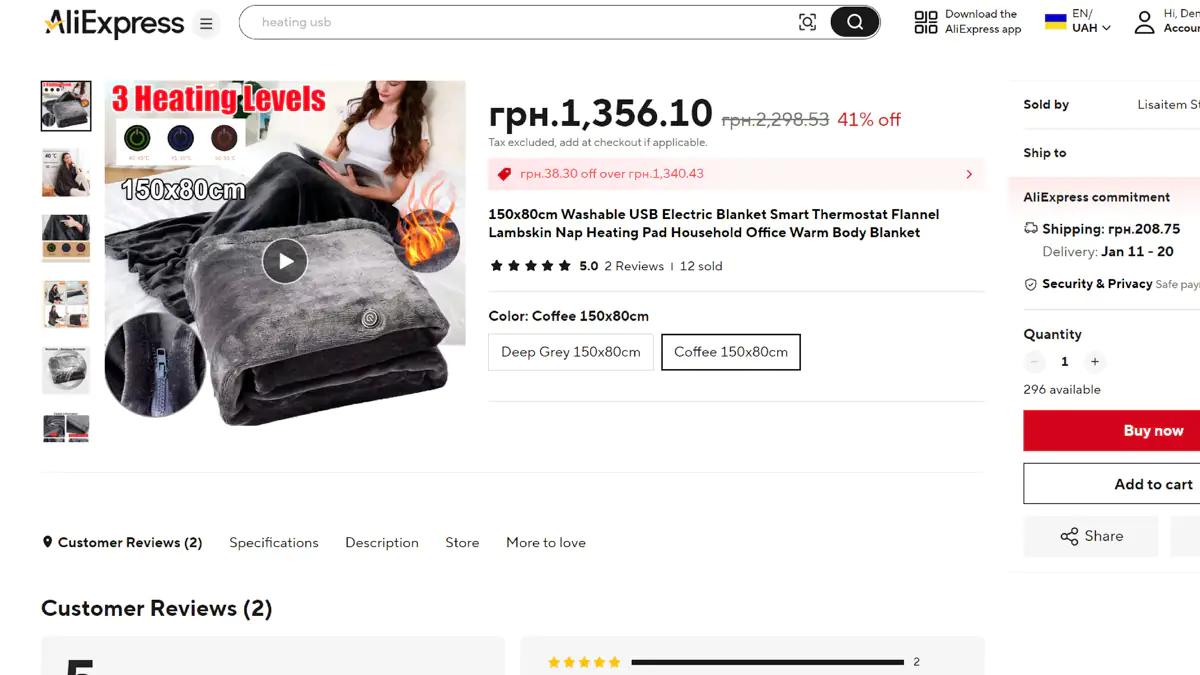
Next are tools for heating hands and feet, specifically gloves and insoles. They are quite affordable, priced around $3-5 for a relatively universal size, and the wire in them is fairly long…
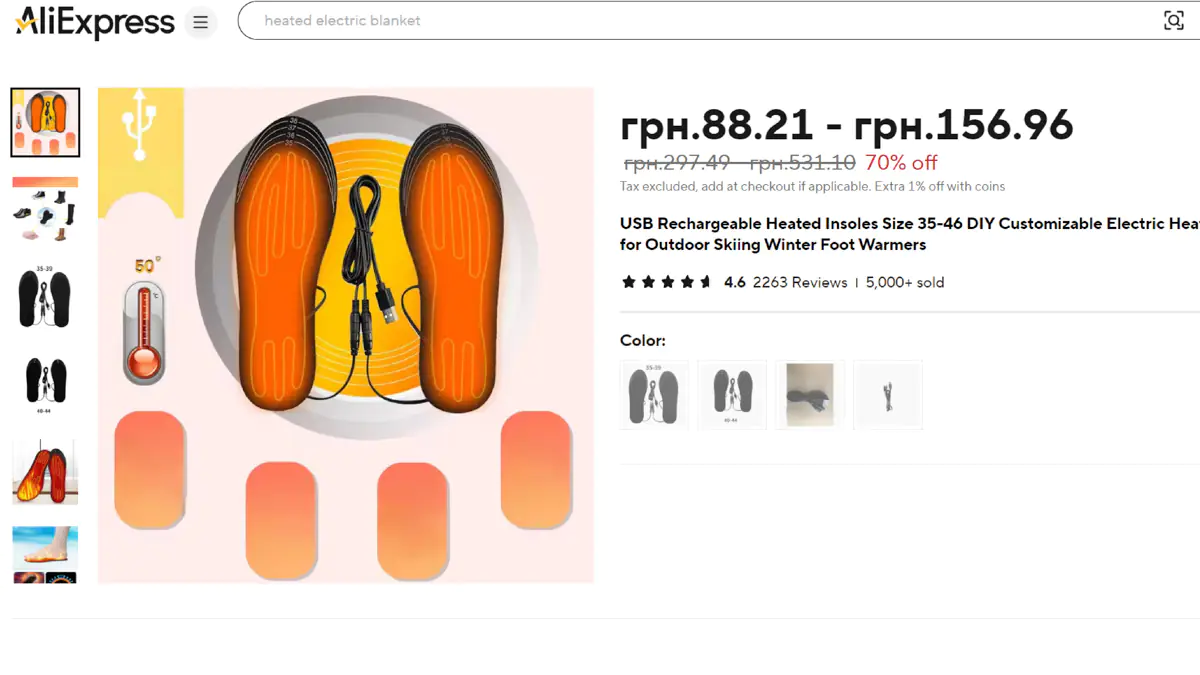
However, the wire needs to be managed under your clothing, and you’ll have to carry the power bank with you. This is generally doable, since even a full-body blanket typically consumes up to 10 watts. For reference, the RivaCase 2571 power bank with 20,000 mAh capacity costs around $16. You’ll also need a 3-meter cable or an extension cord, which you can find in abundance on AliExpress.
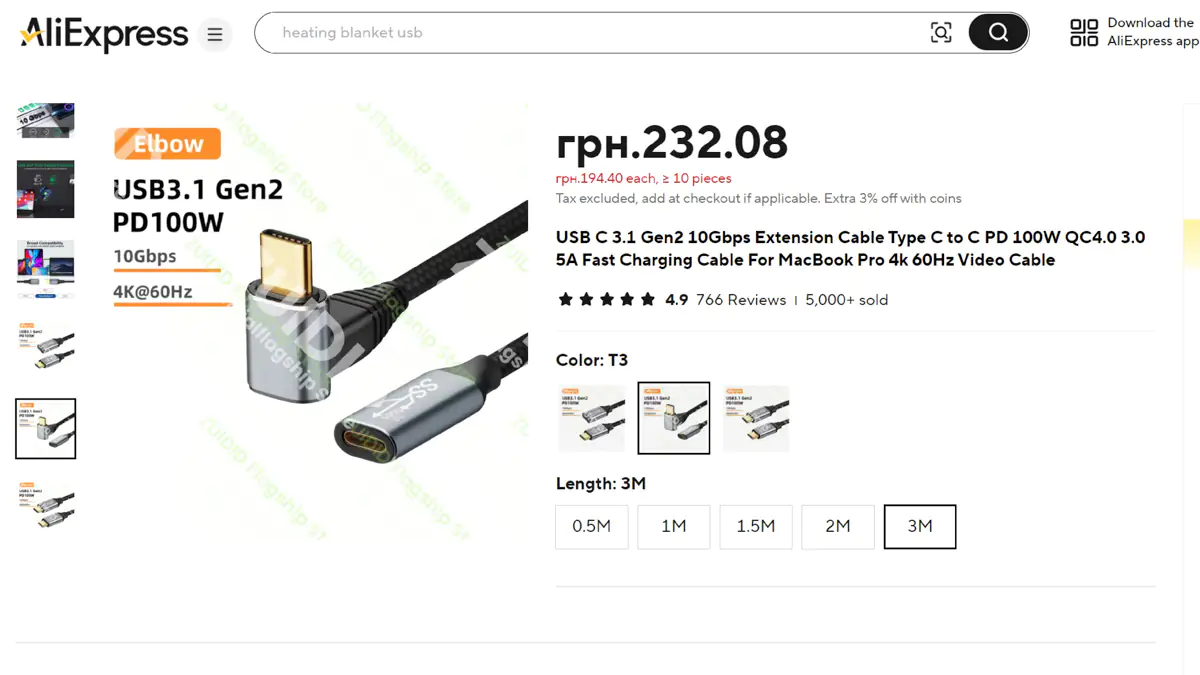
External heaters
Now, moving on to external heaters. Unfortunately, I have to exclude standard fan heaters from this list because I haven’t found any that work with Type-C, at least not in the budget range.
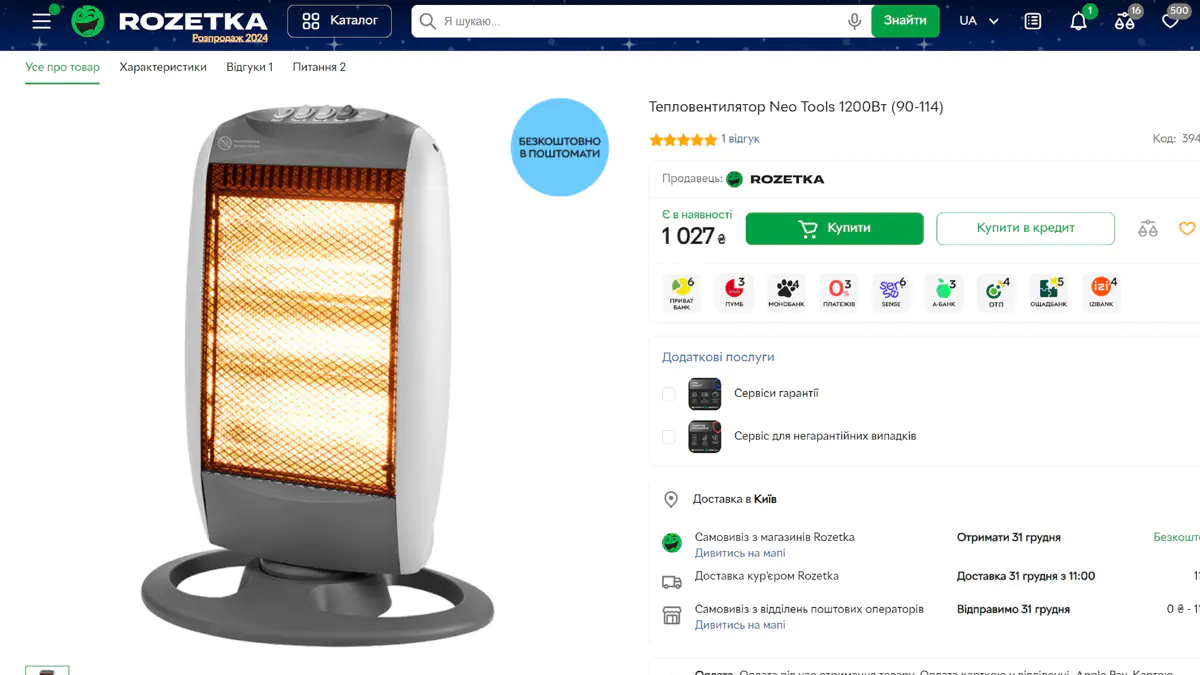
It makes sense – these heaters are designed to heat the entire space quickly, so their power ranges from 300 to 800 watts, which no Type-C connection can support. As I mentioned earlier, higher power means faster heating.
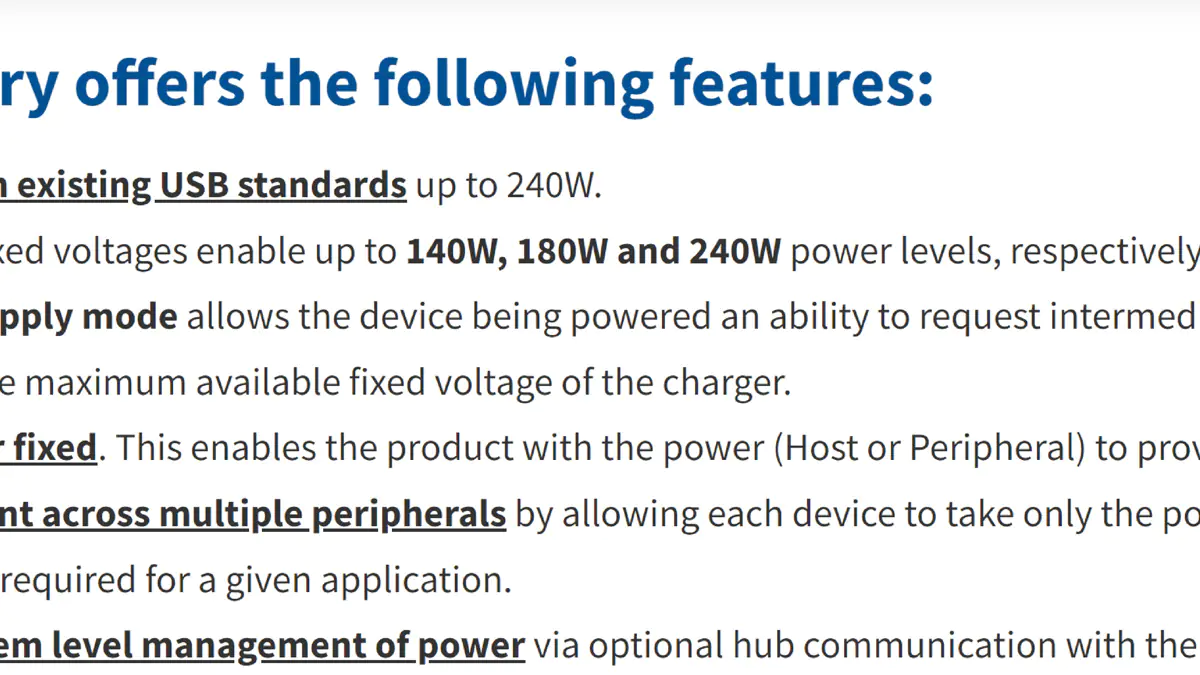
However, there are other options. Specifically, contact heaters, like hand warmers that heat up when you hold them. They’re similar to chemical hand warmers but work longer and often contain a power bank inside. While this isn’t the best idea, as overheating the power bank could lead to issues, the capacity of these devices is usually around 5000 mAh. These heaters can run for a long time, especially when they include a power bank, making them quite useful, but they need to be held in your hands.
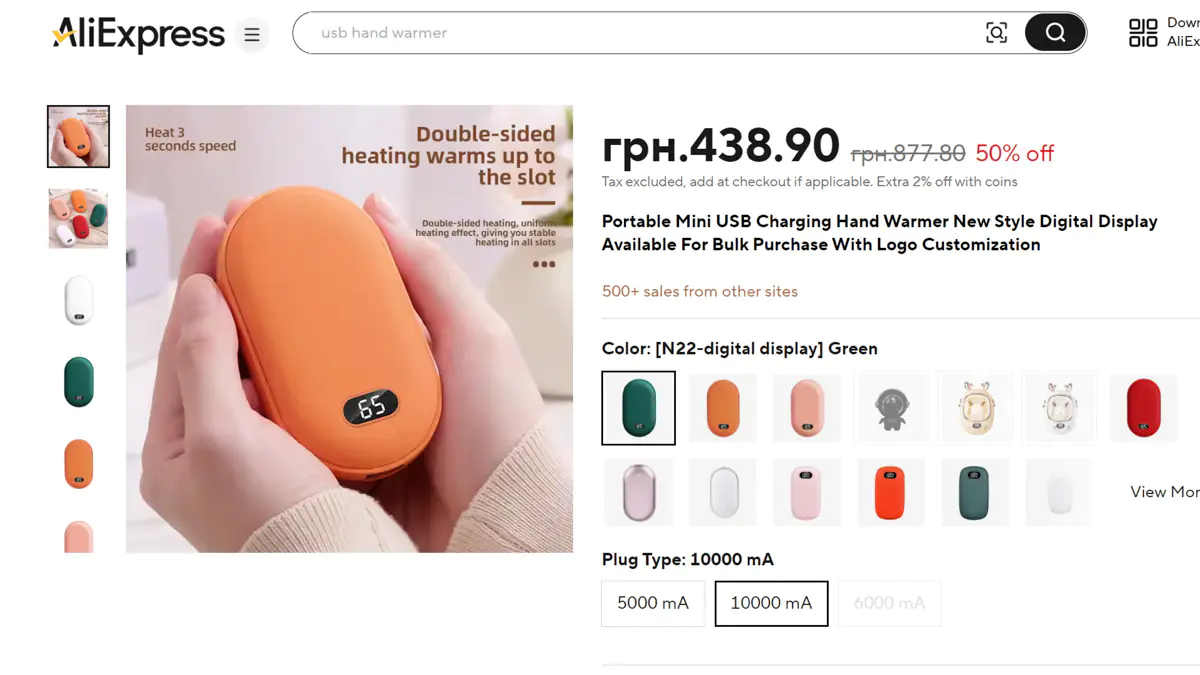
Next, there are heated drink coasters. This category has the worst situation, as cheap models are completely inadequate, and expensive ones aren’t always better than the budget options. Personally, I bought four, and only one turned out to be useful.
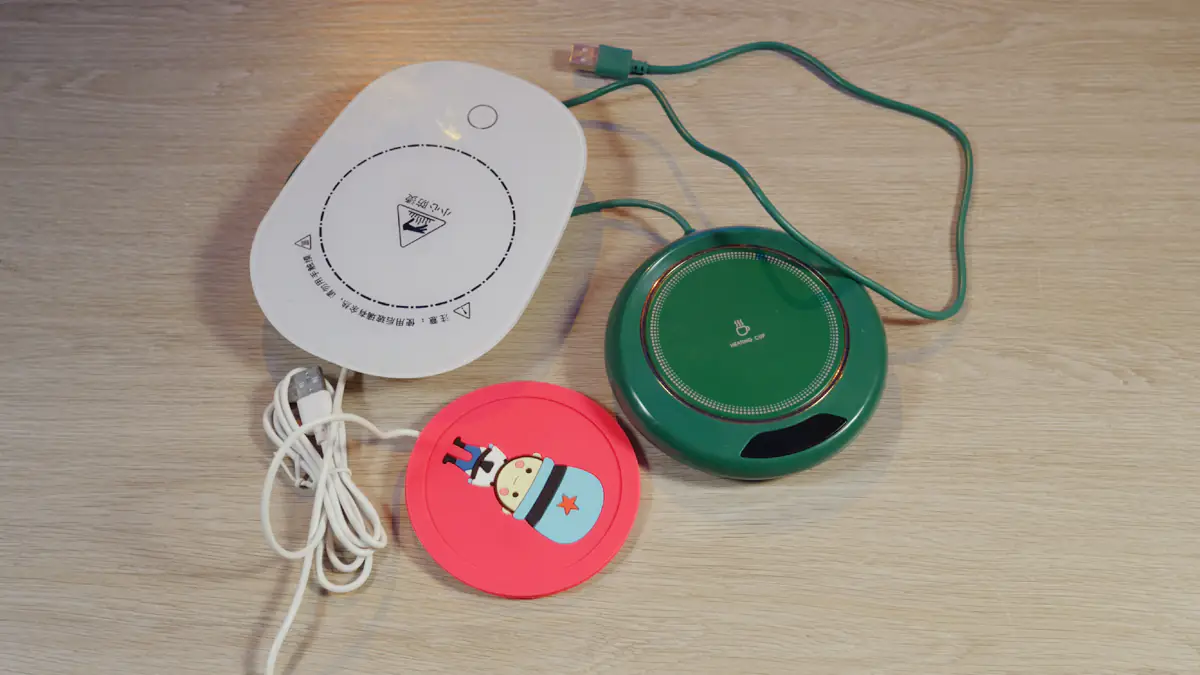
I will provide a link to it, or if it’s unavailable, to the most similar item. This applies to all the models mentioned in this material. What do these coasters do? They heat the surface to a certain temperature—usually up to 80°C, or 75°C at most, as in my case.
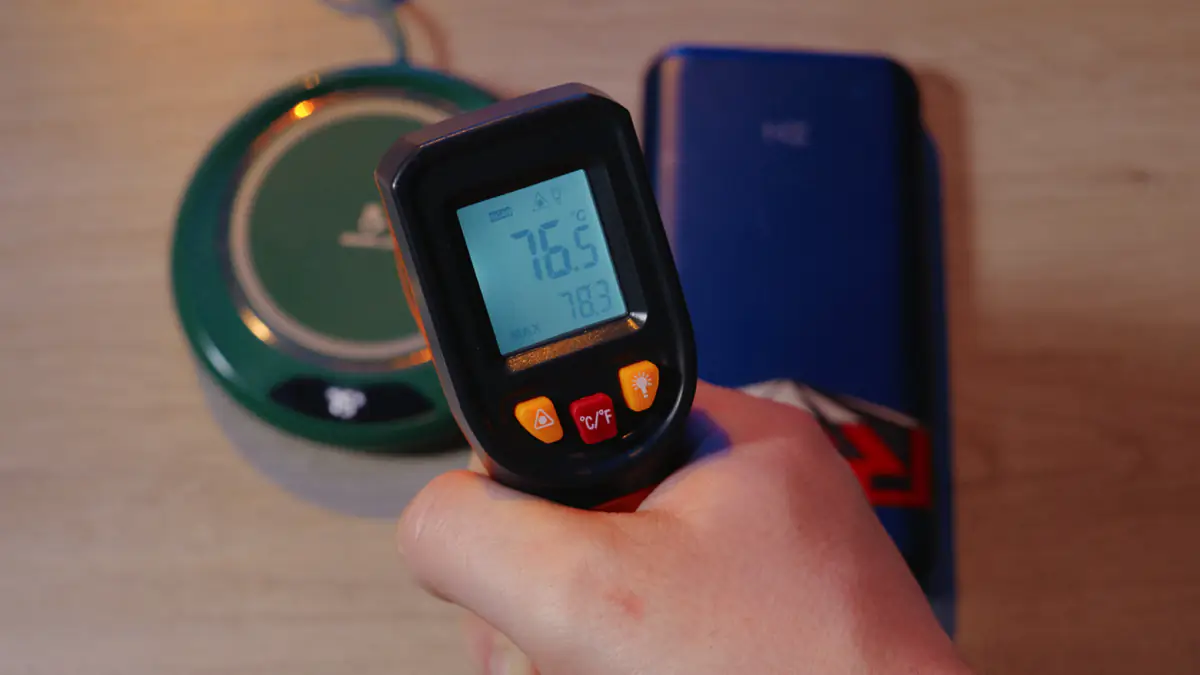
They consume up to 10W maximum. So, as you can imagine, this is a 10W heating element. It won’t boil water in 5 minutes, because to bring 500 ml of water to a boil under ideal conditions, you need, attention, 46Wh of electricity. A mid-range electric kettle consumes around 500W. This heater consumes 10W. You get the idea.
Read also: BLUETTI AC70 Portable Power Station Review: Compact Yet Powerful
However, to maintain some heat for hot tea for about half an hour, this will work. I also used this heater to quickly warm up a surface, like an SSD for removing thermal pads. It’s unlikely that it really reaches 75°C, but it’s definitely around 60°C at least, because your finger can burn quickly, and that’s enough for this device to be somewhat versatile.
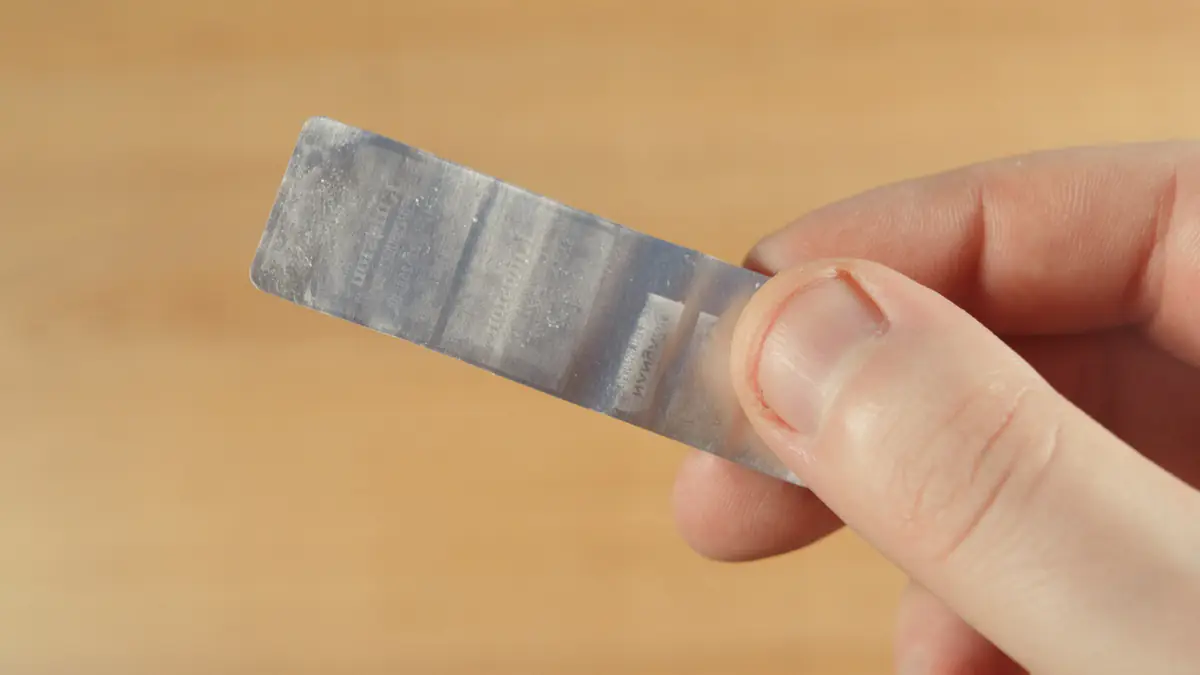
Survive without electricity
Here’s a small story. When I was still living in an old studio apartment at the start of the Russian invasion, and the first blackouts began, I couldn’t cook or even boil water for 8 hours at a time because I didn’t have either a power station or an UPS back then. My stove was induction-based, and there was no heating. When the power did come back on, I had to work to catch up on everything I couldn’t do when there was no electricity. During that time, I survived on dry fuel, canned food, and porridge, which I had stocked up on for a month. Luckily, it turned out to be quite tasty.
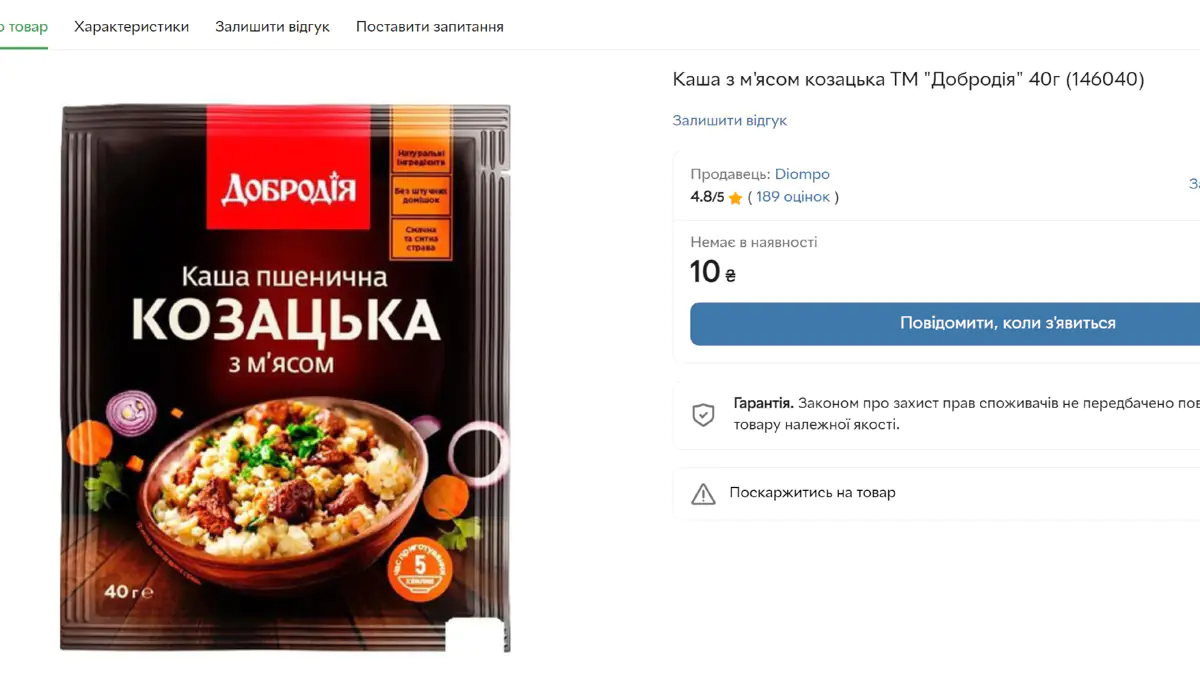
Next, I made a stand from sturdy wire for a metal cup and placed a fuel tablet under the cup to boil water or heat canned food. One tablet was almost enough to bring the water to a boil. I never had boiled water in my stock because I didn’t have time to prepare enough. What kept me calm, though, was that I always had an arc lighter with IP68 protection and charging via microUSB with me.
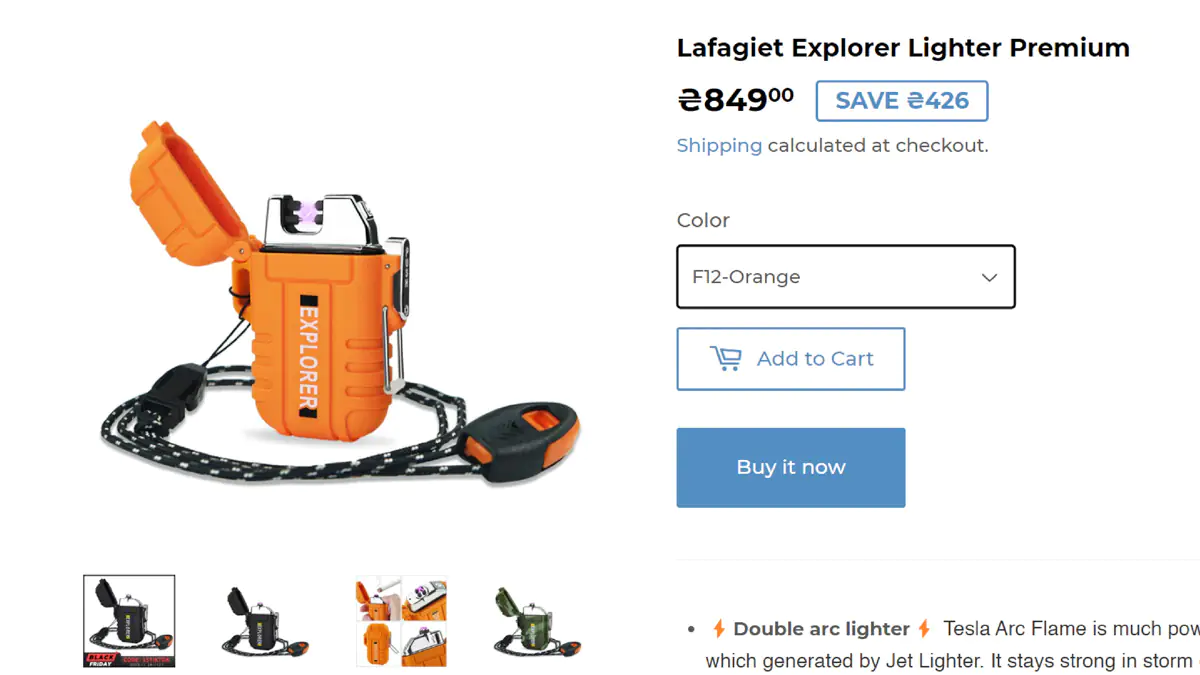
So, I could even light a fire in the rain or strong wind.
In addition, I purchased a kitchen lighter with a microUSB port, two camping lighters with Type-C and fluorescent casings, and a hybrid power bank-flashlight with an arc emergency lighter. This hybrid model is the only branded one in this material and is called the D61 Travel Charging.
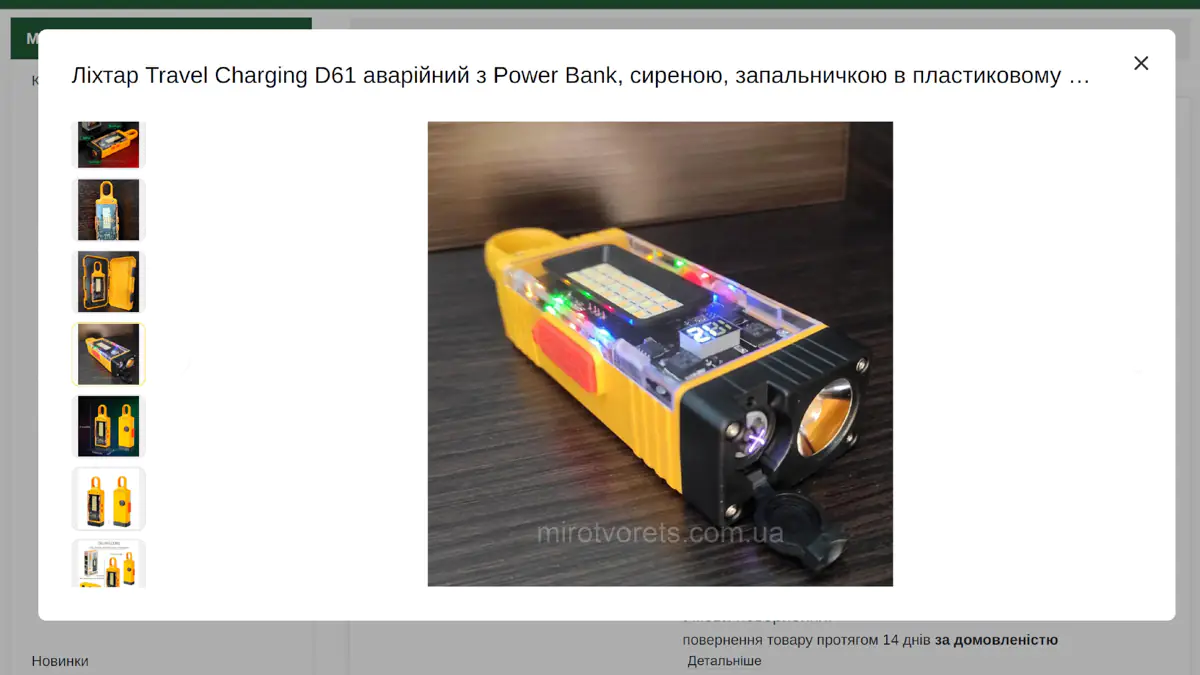
There are also the D51-COB and D54-COB models, but they are just lighters with a flashlight, without a power bank. The only recommendation I can give regarding lighters is to always double-check whether they are coil, plasma, or arc lighters. I also bought a coil lighter and ended up throwing my money away – it couldn’t even ignite a piece of paper.
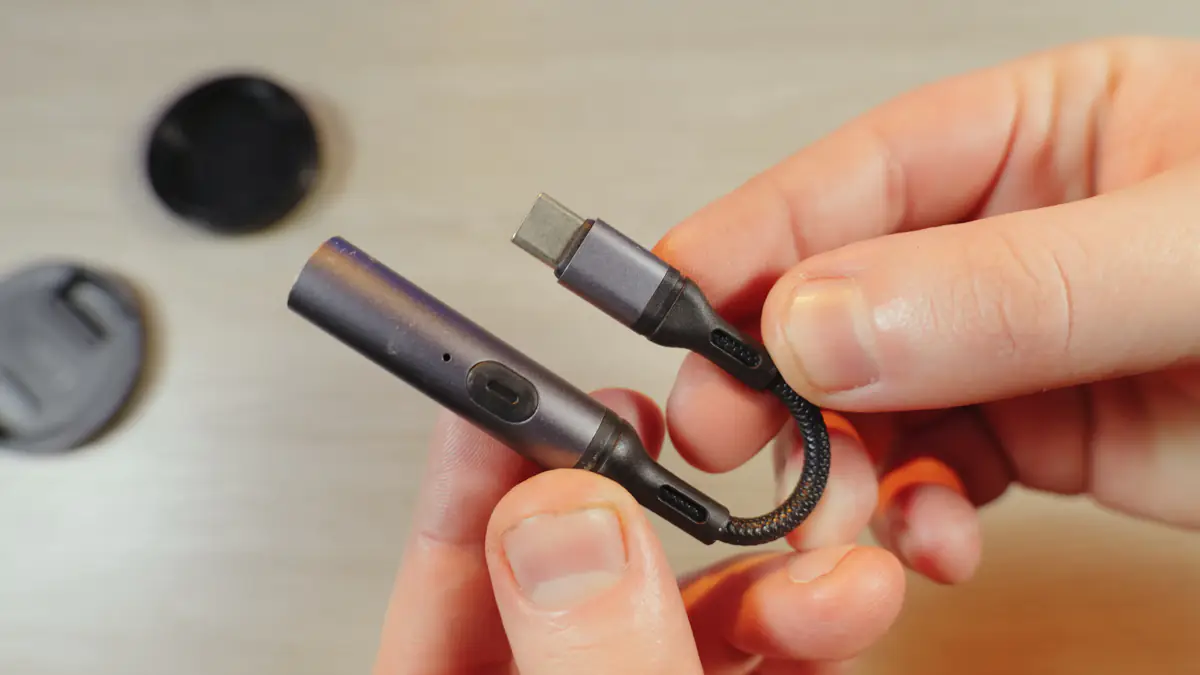
This one is designed for cigarettes, not for survival during blackouts. Unfortunately, the one I bought doesn’t have a battery and works directly from a power bank… or a smartphone. If it had been an arc lighter, it would have been perfect.
In response to whether it’s worth spending money on a Type-C kettle, I’ll answer – they don’t exist. USB kettles are not a thing. There are 12V kettles powered by a car charger, if you have an EcoFlow with a car plug, but by that time, it might be more efficient to just use a regular socket. Alternatively, you can always use dry alcohol to boil water.
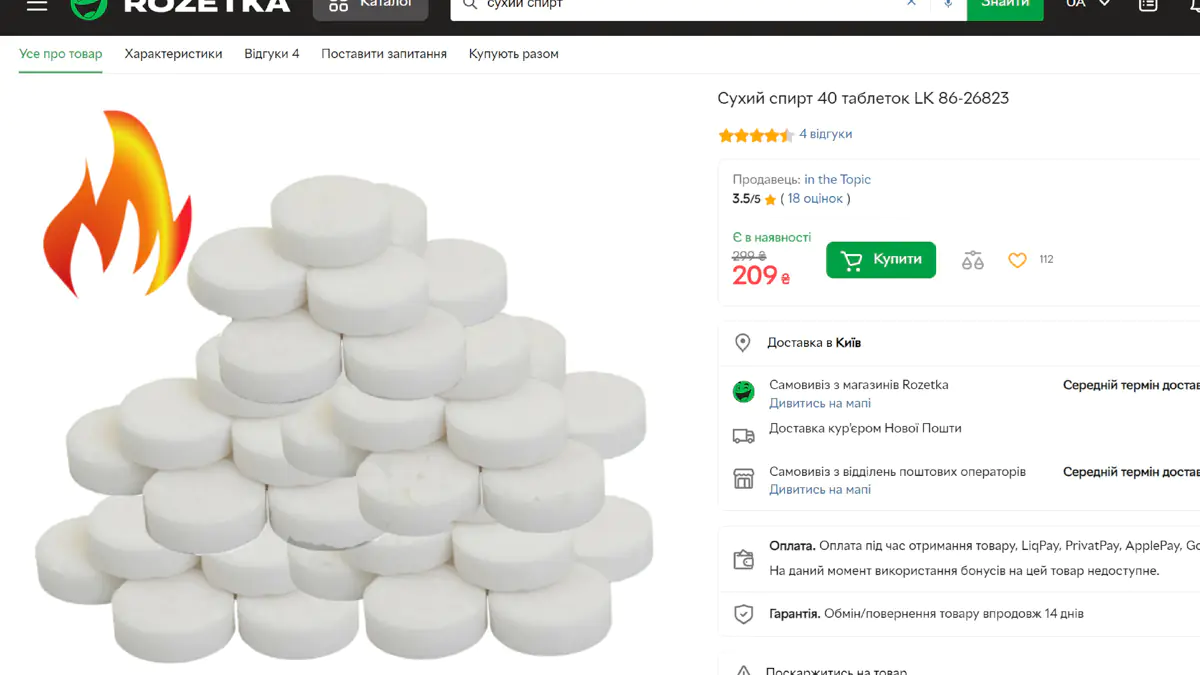
How to stay warm without a heater
And finally, an interesting nuance related to the practical application of physics from school. Specifically, cold air is heavier than hot air. I noticed during the first frosts that in our apartment, for example, in the kitchen, even when you simply raise your hand upwards, the hand up feels noticeably warmer than at the bottom. Even when I’m cooking, convection isn’t enough, and my feet, for example, are constantly cold.
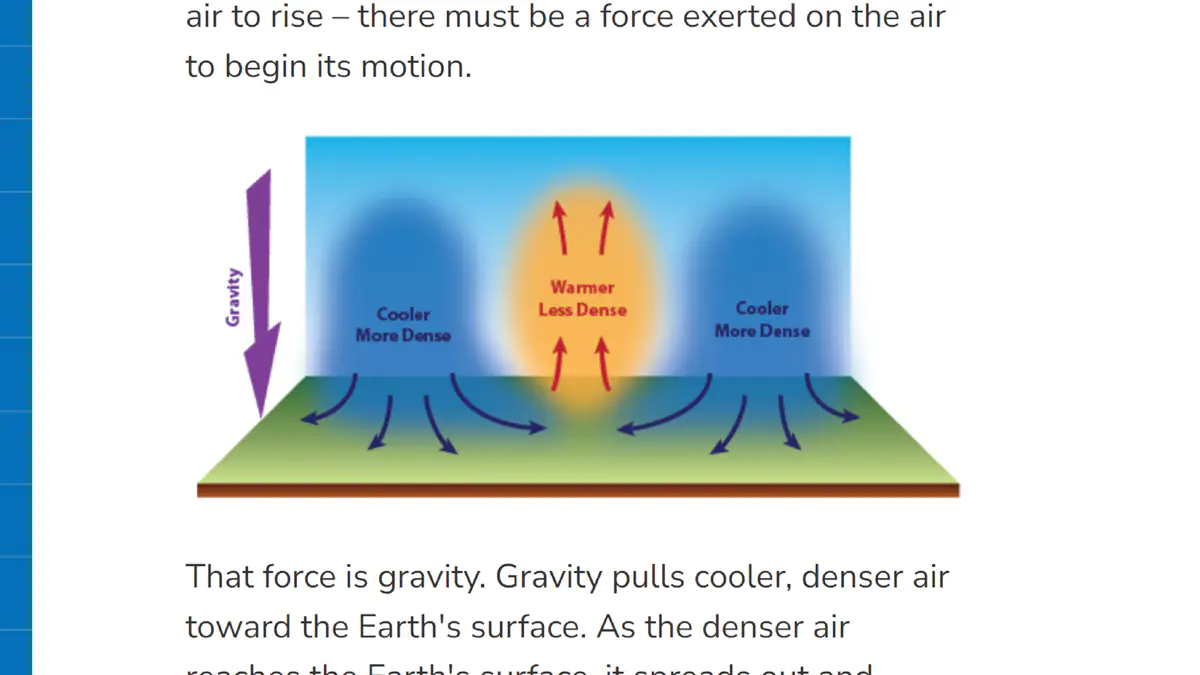
How did I solve this problem? With this thing right here. It’s a turbo fan, and on AliExpress, it costs around $23 on average. Its advantage is that it can generate an airflow for a surprisingly long time, almost greater than a typical hair dryer. This means you can manually accelerate convection. The fan runs on a battery and charges via Type-C.
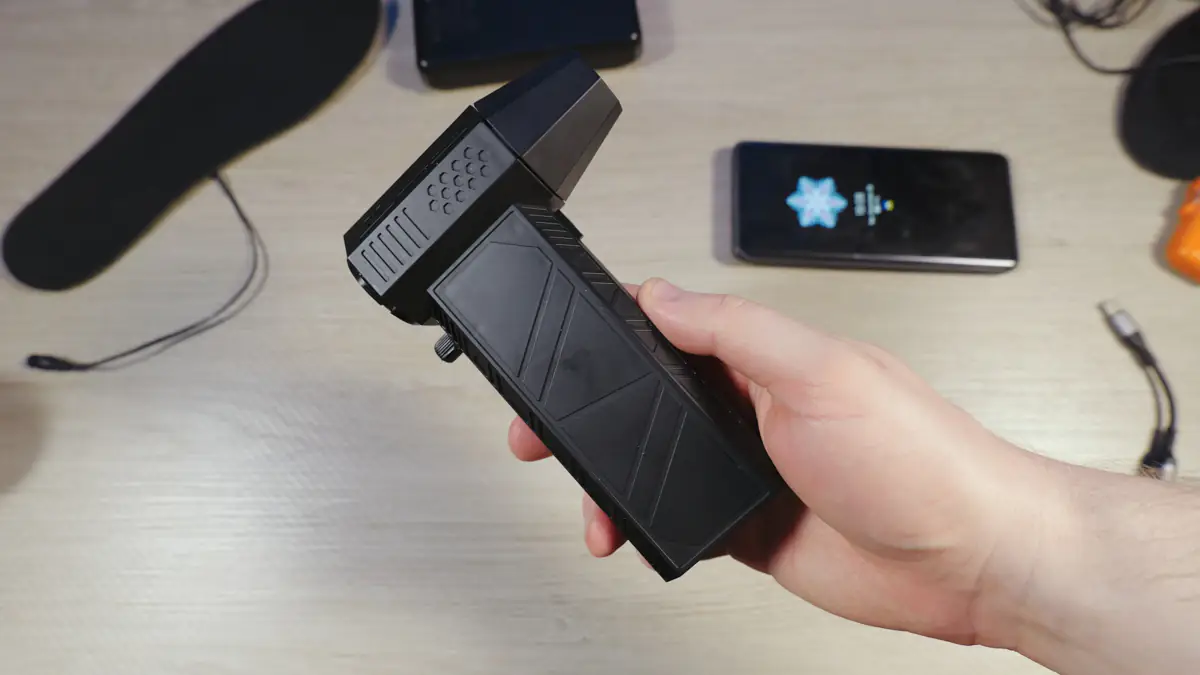
Conclusions
To summarize, here’s a list of things that can really be useful in the cold. A full-body thermal blanket, 160×80 cm, or at least a pocket for your feet. Thermal insoles. And a turbo fan. For the completely paranoid, don’t forget about dry alcohol and an arc lighter. And of course, power banks like Rivacase VA2571 and/or a power charger like EcoFlow River 2.
Read also:
- Review of Budget-Friendly EnerGenie Desktop 1000VA UPS Stabilizer
- BLUETTI AC200L vs OUKITEL P2001 Plus: comparison of portable power stations


